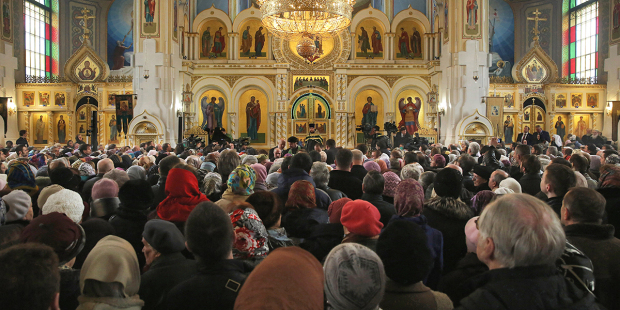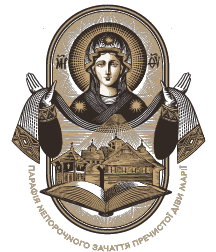
In the Eastern Church, reverence and adoration is expressed differently than what Roman Catholics are accustomed to.
Standing during prayer has been a Christian tradition since the very beginning of the Church. This can clearly be seen by looking at various images drawn in the catacombs during the first few centuries of Christianity, which depict men and women standing in prayer.
Naturally, standing became a typical posture of prayer during the celebration of Mass. While it’s true that kneeling was also part of liturgical prayer, standing was highly favored and seen as a sign of respect and adoration. The Council of Nicea in 325 even went so far as to ban the faithful from kneeling at the Sunday liturgy, so as to promote uniformity.
Since there are some who kneel on Sunday and during the season of Pentecost, this holy synod decrees that, so that the same observances may be maintained in every diocese, one should offer one’s prayers to the Lord standing.
For this reason, Catholics (and Orthodox Christians) who maintain the Eastern traditions of the Christian faith always stand during the Divine Liturgy. It is not customary to kneel during the consecration of the Eucharist because in the Byzantine culture, kneeling was associated with penance, not adoration.
Here is one simple description of the practice from a Byzantine church.
We are standing with our Resurrected and Glorified Lord and this is our proper liturgical sign of being united with Christ as one body. There is no disrespect in standing. Kneeling is considered penitential. We only kneel at certain services during Lent, such as during our Liturgies of the Presanctified Gifts.
While this practice may sound strange to Roman Catholics, it is completely acceptable and is in accord with the culture of Eastern Catholicism. Standing and bowing during the Divine Liturgy is as reverent as kneeling is in a Roman Rite Church.
The Church allows for many traditions to be practiced within the liturgy, and each highlights the beauty of culture and its ability to communicate the same truths through different signs and symbols.



3 Comments
Charles Patrylak
November 4, 2019
I am in the Byzantine Church and would prefer to Knee because it says in the scriptures that at the Name of Jesus every Knee shall Bend so why do we stand at Consecration the most important part of the liturgy
Anonimni
January 7, 2024
Hello,
I have a question: in a local parish of Eastern Catholic(Ukrainian) they’ve translated off. Liturgy book into my native language. I follow it during Liturgy since I dont fully understand old Slavonic and I’ve noticed that the priest skips some (minure) verses that are supposed to be in st. Crysostom Liturgy. Is this ok?
Thank you in advance for your answer.
Blessings in the Lord Jesus
Joe
April 8, 2024
John 6 verse 54 States that those who eat my body and blood will have eternal life, and I will raise them up on the last day. That is enough proof that we are to stand to symbolize the lords resurrection.
What does it mean for every knee to bow at the name of Jesus? This statement emphasizes the universal lordship of Jesus Christ. It means that all people, whether they are believers or unbelievers, will one day acknowledge Jesus as Lord. The reference to knees bowing implies an act of submission and worship. Every person will one day acknowledge the authority of Jesus Christ and give him the honor and respect he deserves.
Write a comment: